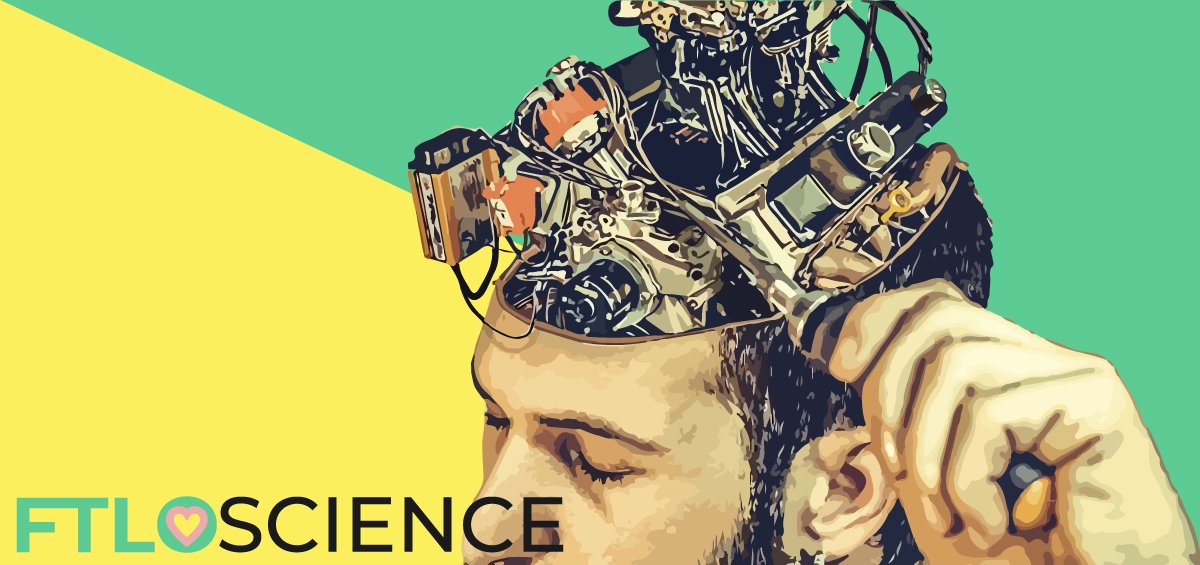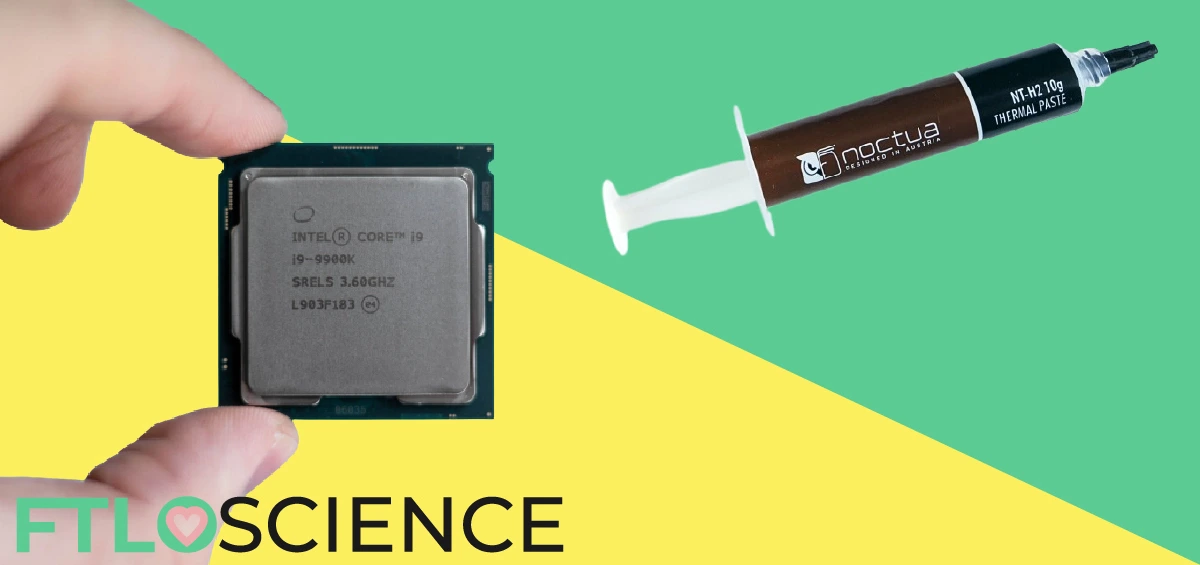The goal of a quantum computer is to perform computations that would be too intensive and impractically long for a classical computer to compute. One such computation where it is often cited that a quantum computer will be able to do much more efficiently than standard classical computers (that’s the typical computer that is ubiquitous today) is the factorization of very large numbers. Multiplying two large numbers is easy for any computer. But calculating the factors of a very large number, on the other hand, is no easy feat. In fact, the challenge of factoring large numbers after encryption is what secures the internet and protects communications, our bank accounts, and other sensitive data. Will quantum processes render these encryptions useless in the future?
Tackling Encryption with Quantum Computing
In 2016, it took several hundred standard computers two years to crack an encrypted message with a key that was 768 bits long. If it were a 1,024-bit key, it would have taken 1,000 times longer, and it is estimated that cracking the current highest standard of a 4,096-bit key would take more than a billion years! So, the speed at which computers can crack encrypted messages determines our security and, conversely, our vulnerability1. However, in 1994, Peter Shor from the Massachusetts Institute of Technology (MIT) showed that using his algorithm, a quantum computer could factor large numbers quickly and, in principle, easily crack encryption that is secure when using standard computers.
Quantum vs. Standard Computers
Quantum mechanics describes the behavior of atoms and subatomic particles, which can, in turn, be applied to everything in the universe (including ourselves!). Quantum computing aims to harness this power at the tiniest of scales to improve computer processes. The power of quantum computers can be assessed by the number of qubits (qubit = quantum bit) they can process. As of the end of 2020, the best quantum computers have yet to pass the 100 qubits mark. However, quantum computers are in general getting more powerful.

Advanced Encryption Standard (AES) is an encryption algorithm that encrypts fixed blocks of data of 128 bits at a time and is probably the most common encryption method today. RSA (named after its founders) is a public-key encryption algorithm that is also popular over the internet. RSA-200 has 200 decimal digits (maximally equivalent to about 663 bits), which can be factored into two 100-digit primes. The CPU time in identifying these primes by a collection of parallel computers would amount to approximately 75 years of work for a single 2.2 GHz Opteron-based computer3. However, for a quantum computer, a 128-bit or 256-bit encryption could be easily cracked by a 5-qubit computer, a feat achieved in 2002.
Human Computers
Amazingly, human brains may not be far behind. Shakuntala Devi (who lived from 1929 to 2013) was an Indian writer and mental calculator, also known as the ‘Human Computer’. By the 1970s, she had become globally recognized for the astounding mathematical feats she performed in her head. In 1977, Shakuntala found the root of a 201-decimal-digits number in 50 seconds. What’s more, this was the 23rd root of the number – a much more difficult problem than just the square root solved by computers to decrypt RSA-200 (as discussed above)4.
In principle, if Shakuntala could break 663 bits (equivalent to the processing power of about a 9-qubit quantum computer), she would be able to crack most of the encryption on the internet today (based frequently on 128 bits or 256 bits) with ease, much like a quantum computer. How could a human brain do it, in the absence of a quantum processor?

Zerah Colburn, born in 1804, was the son of a farmer in Vermont, USA. When he was six, while not being able to read or write, he was able to factorize the 10-digit number 4,294,967,297 which, until shortly before his time, was thought to be a prime number. Leonhard Euler, one of the greatest mathematicians of all time, painstakingly calculated on paper that it was divisible by 641. When Colburn—unaware of all this—was given the problem, he arrived at 641 ‘by the mere operation of his mind’ effortlessly and promptly. He was able to find the prime factors of other 10- and 11-digit numbers (approximately 35 bits!) in his head virtually instantaneously.
The important feature of this is that Colburn was totally unable to explain how he had reached his conclusion. He never had any formal education, nor could he even multiply or divide numbers on paper. His computations were all done in his head. He was not an exception; the 17th-century mathematician John Wallis derived the square root of a 55-digit number to 27 places6. Zacharias Dase, a 19th-century mental calculator with astounding calculation skills, found the square roots of 100 digits and 60 digits. Dase was also found to be limited in general intelligence and completely lacked mathematical understanding.
Exploring the Complex Human Brain
Problem Solving in Savants
The most popular explanation is that a savant relies on extraordinary memory to solve mathematical problems. This seems to explain their quick answering speed and would be consistent with the low general intelligence of these savants, as this form of ‘problem-solving’ does not require any complex mental operations. There are limitations, however, in assuming a rote memory model.
Firstly, savant skills do not seem to improve over time after developing (unlike memory skills). Secondly, the time taken to do the factorization increases with larger numbers, suggesting that there is actual analytical processing happening. Thirdly, historically there are many cases where savants identified prime numbers without having access to prime tables and sometimes even went beyond existing tables. And finally, the tasks set by the testers are quite random and unpredictable—it would be impossible to cover every eventuality and store it in memory before being challenged7.
Practically all savants are devoid of advanced mathematical understanding. Savants with mathematical skills can distinguish primes through the discovery that they cannot factorize them, but how can mathematically weak savants even distinguish a prime number from one that is not? Quite a few of the mentioned individuals that perform these feats lack the intellectual capacity to even understand multiplication or division, let alone the concept of prime numbers. Yet they are somehow able to distinguish them as being different or special. Except in prime tables, this information is not readily available, and neither do prime numbers have any visual cues that would suggest that they would be prime in different circumstances.
It has to be concluded that these mathematically weak savants apply a strategy that allows them to perform their skills without making complex calculations, at a speed that exceeds a calculation procedure. Except for rather speculative ideas such as computer-like mechanism…
Hans Welling, 19947
Comparing our Brains to Computers
The opinion currently is that the brain does not operate like a computer. But this begs the question – specifically what type of computer are we comparing the brain to? A dumb terminal robotically executing a program, a standard computer with machine- or deep-learning capabilities, a 10-qubit quantum computer, or a 100-qubit quantum computer (the list goes on)? Furthermore, while most of the brain may be operating otherwise, it may be possible for certain components of the brain to mimic a standard classical computer. In fact, this is what has been found.
Computers operate by turning electrical signals into binary ‘on and off states’ and use switches to control these states. The same operating principles have now been discovered in the human brain’s prefrontal cortex and basal ganglia. The researchers conclude that there are neurons in the prefrontal cortex that have two states, either active or inactive, and the basal ganglia function like a switch that the brain uses to turn on or off different regions of the prefrontal cortex8.
Left and Right Hemispheres in Computation
Aside from governing handedness, the left and right hemispheres of the brain are also responsible for different mental tasks. Researchers, using fMRI brain imaging studies, noted that simple mathematical operations like addition and subtraction (that can be done by a classical processor) activated the left inferior parietal lobe, left precentral gyrus, left superior parietal lobe, left supramarginal gyrus, and left middle temporal gyrus. This supports the hypothesis that the left hemisphere is used more for these types of tasks than the right hemisphere. Another study found that the left frontal lobe also seems to play a critical role in multiplication9.
The reality is not as straightforward, as brain hemisphere activation also depends on how the task was presented. For example, different parts of the brain might be involved when the same task is presented by visual compared to auditory means. In this case, many areas in the brain not directly involved in specific computational tasks may also be activated during the process of mathematical problem-solving. Furthermore, the normal human brain integrates signals from both hemispheres, so it may be difficult to distinctly identify the actual computational areas from the final output from an intact brain.
However, experiments on split-brain patients show that the way the right and left hemispheres process incoming information are very different, and this is reflected in the physical organization of the neurons in each hemisphere. What we are interested in primarily is studying these distinct groups of neurons that process incoming information differently. Due to the well-known plasticity of the brain, they could be distributed or configured differently in the population. Nevertheless, these descriptions of the right and left hemispheres are useful because they do reflect the general architecture of most normal human brains6.
Does ‘God’ Reside in the Right Brain?
Just like the towering mathematical genius Srinivasa Ramanujan (born in 1887) of ‘The Man Who Knew Infinity’ fame, the aforementioned ‘human computer’ Shakuntala Devi attributes her gifts to ‘God’. In split-brain patients, the two hemispheres of the brain behave as if they were different individuals and personalities. This is an extreme version of what is true of normal people. It has been argued that the left hemisphere of the brain interprets the right hemisphere as a separate sensed presence, or sometimes as God, during mystical experiences induced in his laboratory6. Were Shakuntala’s and Ramanujan’s ‘God’, who they claimed gave them the solutions to complex computations, in the right hemisphere of the brain?
One interesting aspect of Ramanujan’s powers is that he often took hours or even months to laboriously verify and prove what he often received in an instant and that sometimes his insight turned out to be wrong! Ideas arrived at by intuition, just like ideas derived from deliberate conscious thinking, can contain errors. It is not infallible (ruling out the conventional notion of God) and points to an unconscious computational process. (Hint: Error correction procedures are extremely important and essential in today’s quantum computers.)
The right hemisphere is associated with intuitive abilities, characterized as ‘unconscious’, and is known to process information differently from the left hemisphere. Not even the savants or geniuses knew where the answers came from, indicating that the deep processing was largely unconscious. Although, once the gist of the solution appeared, there was some conscious processing to put some structure into it.
This gives us an interesting insight into the nature of unconscious processing [in the brain]—it works like a quantum supercomputer, using a different type of logic.
Jay Alfred, 20066
The Quantum Computer in Our Brains
Observations by researchers do generally imply that the left hemisphere of the human brain works analogously to a classical processor in a computer with the right hemisphere behaving as a quantum processor. So, the brain as a whole is equipped with both a quantum processor and a classical processor, with the classical processor feeding or interpreting data going to or coming from the quantum processor. This is remarkably similar to the architecture of current quantum computers.
When computers are employed to test if certain numbers are prime, they use sophisticated algorithms that incorporate many shortcuts. Neurologist Oliver Sacks, who has studied many of these savants, stopped short of saying that they were human computers rapidly carrying out millions of calculations per second—serially, one after the other, or in parallel, all at once—because he thought the processes they employed could not be achieved with an algorithmic process10.
Nor was there any easy way, in 1966, unless one had the use of a sophisticated computer. And even then, it would have been difficult, for whether one uses Eratosthenes’ sieve or any other algorithm, there is no simple method of calculating primes of this order…
Oliver Sacks, Neurologist, 1985
Quantum Superposition in Computing
Perhaps such quick calculations may be ‘non-algorithmic’ based on what Oliver Sacks knew about computers, which were then largely standard classical computers. But what about a computer that uses quantum algorithms that exploit quantum superposition?
Superposition is at the core of quantum computing. Ordinary computers work with bits that can be either on or off, coded as one or zero, respectively. Two bits can represent only 1 quantum state at any point in time. However, quantum computers work with qubits, which can have a value of 0, 1, or both at the same time! So, two qubits can represent four states simultaneously (00, 01, 10, 11) which—when extrapolated to 100 qubits—can represent 1.3 quadrillion quadrillion states simultaneously! This means that a quantum processor in a computer would be much faster and more efficient at some kinds of computations than would be a classical processor11.
Brains, Phosphorous and Quantum Information
In 2013, researchers from the University of New South Wales (UNSW) created the first working quantum bit based on the spin of the nucleus of a single phosphorus atom, within a protective bed of non-magnetic silicon atoms with zero spin. In a ground-breaking paper in Nature, they reported a record-high accuracy in writing and reading quantum information using the nuclear spin12.
As the nucleus of a phosphorus atom has a very weak magnetic field and possesses the lowest spin number of ½ (which means it is less sensitive to electric and magnetic fields), it is nearly immune to magnetic noise or electrical interference from the environment. It is further ‘shielded’ from noise by the surrounding bed of zero-spin silicon atoms. Consequently, the nuclear spin has a longer coherence time enabling information to be stored in it for a longer time, which results in a much higher level of accuracy. Using basically the same set-up, Matthew Fisher, a physicist at the University of California, proposed a model where nuclear spins in phosphorus atoms in the human brain can serve as qubits (the element phosphorus is abundant in the brain)13.
Fisher argues quite convincingly that spins of the nuclei of phosphorus atoms in the human brain can be sufficiently isolated by the protective cloud of electrons around it and the protective shield of a bed of zero spin atoms. Phosphorous in our brain is also less ‘distracted’ by quantum noise because of its weak magnetic field (due to its low spin number), allowing it to preserve quantum coherence as confirmed by the UNSW researchers. So, in an environment such as the brain where electric fields abound, the nuclei of phosphorus atoms would be in a sufficiently isolated environment to store quantum information. There is, in theory, a viable proposal that the brain could operate like a quantum computer!
Might we, ourselves, be quantum computers, rather than just clever robots who are designing and building quantum computers?
Matthew Fisher, Physicist, 2020
Conclusion
If the human brain does contain a quantum processor, we should not be blind to the possibility that everyone should be able to perform complex calculations (and more). A possible reason why these superhuman feats are uncommon is that the activities of the classical processor in the human brain are dominant in most people. When the classical processor is damaged or dysfunctional, as in autistic savants, these abilities are able to come to the fore. These savants might even be forced to use their ‘quantum processor’ in the absence of a properly working classical processor.
As noted, many of these mathematical savants cannot add or subtract (suggesting that the ‘classical’ processors in their brains are malfunctioning) but can factorize incredibly large numbers using the quantum processors in their brains. It is likely that the more successful savants use both the quantum processes in their brains, coupled with an extent of classical processing, for problem-solving.
Many of the observations discussed above may not be so apparent in normal brains. However, it becomes more evident when researchers study split-brain patients or autistic savants. The ‘human computers’ that we have discussed may very well be as different from ordinary people as quantum computers are to classical computers, in terms of their capabilities. It is also just as likely that a normal human brain uses both classical and quantum processors, very much like today’s quantum computers. Further research is definitely needed to unravel the complexities of brain function.
This article was written by Jay Alfred via Write For Us.
Reference
- Naughton, J. (2019, September 29). Will advances in quantum computing affect internet security? The Guardian. https://www.theguardian.com/commentisfree/2019/sep/28/google-quantum-computer-internet-security-threat
- Image Source: CB Insights. (n.d.). What Is Quantum Computing? CB Insights Research. https://www.cbinsights.com/research/report/quantum-computing/
- RSA numbers. (n.d.). Wikipedia. https://en.wikipedia.org/wiki/RSA_numbers.
- Jensen, A. R. (1990). Speed of Information Processing in a Calculating Prodigy, University of California, Berkeley.
- Image Source: Harish, S. (2019, June 13). Human Computer Shakuntala Devi. Medium.com. https://medium.com/@ayathamarajuspandana/human-computer-shqkuntala-devi-c2a8c152c381
- Alfred, J. (2006). Brains and Realities, Issuu. https://issuu.com/phaedris/docs/alfred_-_brains_and_realities
- Welling, H. (1994). Prime Number Identification in Idiots Savants: Can They Calculate Them? Journal of Autism and Developmental Disorders, 24(2), 199-207.
- University of Colorado at Boulder. (2006, October 6). Human Brain Region Functions Like Digital Computer. ScienceDaily. www.sciencedaily.com/releases/2006/10/061005222628.htm
- Hamid, A. I. A., Yusoff, A. N., Mukari, S. Z-M, S., & Mohamad, M. (2011). Brain Activation during Addition and Subtraction Tasks In-Noise and In-Quiet. Malaysian Journal of Medical Science, 18(2): 3–15.
- Sacks, O. (1985). The man who mistook his wife for a hat. New York: Summit Books.
- Naughton, J. (2019, September 29). Will advances in quantum computing affect internet security? The Guardian. https://www.theguardian.com/commentisfree/2019/sep/28/google-quantum-computer-internet-security-threat
- Pla, J., Tan, K., Dehollain, J., Lim, W., Morton, J., Zwanenburg, F., Jamieson, D., Dzurak, A., & Morello, A. (2013). High-fidelity readout and control of a nuclear spin qubit in silicon. Nature, 496(7445), 334-338.
- Fisher, M. P. A. (2015). Quantum cognition: The possibility of processing with nuclear spins in the brain. Annals of Physics, 362, 593-602.
About the Author

This article was written by a contributor. For a full list of guest writers, click here.




